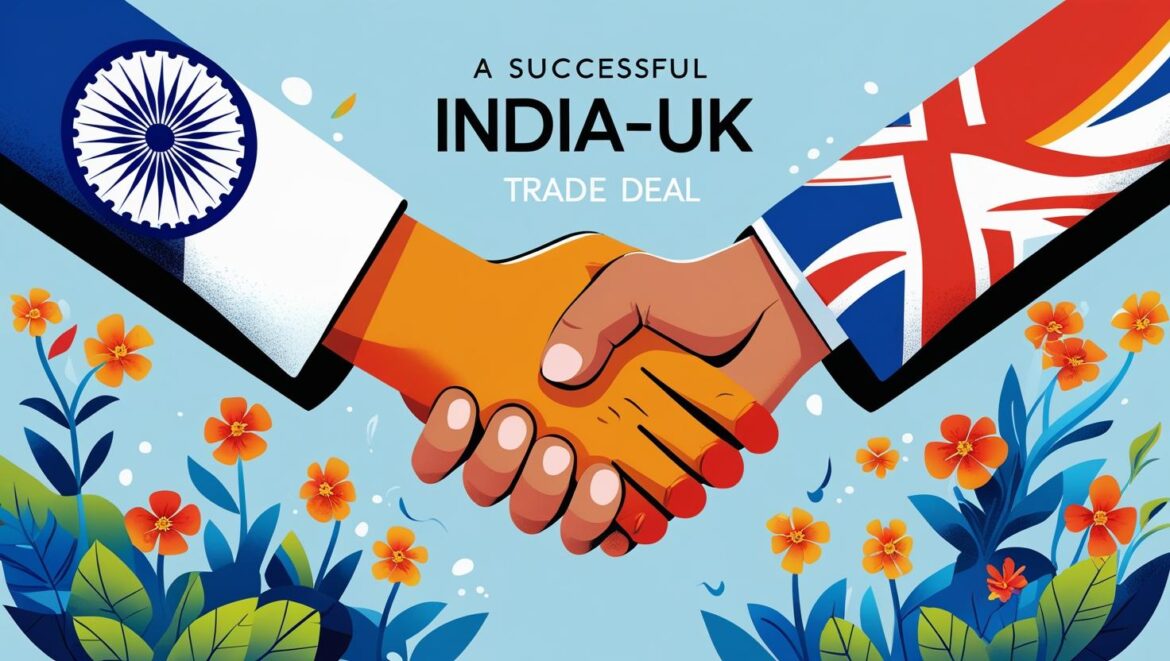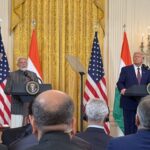India’s ambitious free trade agreement with the United Kingdom—signed with fanfare on July 24, 2025—appears to be less a strategic breakthrough and more a troubling surrender of regulatory ground, according to a growing chorus of critics.
Billed as a milestone in post-Brexit economic diplomacy, the India-UK Comprehensive Economic and Trade Agreement (CETA) is now under scrutiny not for what it achieves, but for what it concedes. A closer look at the fine print reveals a pattern that is drawing concern from trade policy experts and civil society organizations: limited quantifiable gains on exports, offset by sweeping compromises in public health, digital sovereignty, and industrial strategy.
At its core, the deal reflects a policy shift that prioritizes headline trade numbers over long-term developmental autonomy—a trade-off that many argue India can ill afford.
Health Sovereignty Undermined
One of the most controversial elements is the intellectual property chapter, where India has agreed to terms that critics say weaken its capacity to ensure affordable medicines. By shifting preference toward voluntary licensing and limiting the use of compulsory licensing, the agreement blunts India’s ability to bypass patent monopolies during public health emergencies.
Moreover, reduced transparency requirements for patent holders—such as limiting the frequency of disclosures—could make it harder for Indian generic manufacturers to challenge drug patents. These changes represent a rollback of India’s long-held position at multilateral forums, particularly the WTO’s TRIPS agreement and the Doha Declaration on Public Health.
A Digital Concession Without Precedent
Equally significant is the agreement’s digital and e-commerce chapter, which signals a major departure from India’s previously defensive posture on data and software governance.
By agreeing not to demand access to source code from foreign software providers, India weakens its regulatory oversight of imported AI systems and digital platforms. Analysts warn this could leave India vulnerable to opaque algorithmic operations, data misuse, and cybersecurity risks.
Further, the agreement treats public data—including government-held information—as an open resource accessible to foreign stakeholders. This is not only a violation of data sovereignty norms but a policy precedent that could weaken India’s position in future digital economy negotiations.
Market Access for Whom?
The promise of enhanced market access under the FTA is largely symbolic. While UK tariffs on 99 per cent of Indian exports may technically be eliminated, real-world gains remain uncertain due to persistent non-tariff barriers (NTBs). These include the UK’s stringent geographical indication (GI) protections and its new Carbon Border Adjustment Mechanism, which could make Indian exports less competitive.
Meanwhile, in sectors where India enjoys relative strength—such as automobiles and whisky—the deal mandates significant tariff reductions. Tariffs on British car imports will be slashed from 110 per cent to 30 per cent in early years, while duties on imported whisky will drop from 150 per cent to 40 per cent over a decade. These moves risk eroding domestic manufacturing and agro-processing gains built over decades.
Procurement and Policy Handcuffs
Perhaps the most jarring aspect is the liberalization of India’s central government procurement—a traditional tool for promoting domestic industry and employment. Under CETA, UK firms will receive treatment equal to Indian suppliers, even in areas linked to the “Make in India” initiative. The UK, however, has not reciprocated in kind, with its foreign procurement spending historically limited.
This asymmetry undermines India’s ability to use state purchasing power for social and economic development—especially for MSMEs and village industries.
Locked In, Gains Deferred
India has committed to locking in liberalization in financial services—effectively assuring UK banks and insurers future market certainty. But the oft-cited Double Contributions Convention, which would protect Indian workers from social security double taxation, remains unfinished and without a timeline. This leaves India having surrendered concrete policy space today for vague promises tomorrow.
Even more troubling are Most Favored Nation (MFN)-style clauses that could bind India to similar concessions with other countries in the future, should such terms be agreed elsewhere.
A Weak Bargain?
According to the UK’s own projections, India is expected to gain just £3.7 billion in additional annual exports by 2040—a mere 0.44 per cent of its current exports—while the UK will gain 1.5 times more. These figures are hardly transformational, yet India has made irreversible policy concessions that go far beyond trade.
The strategic logic behind the agreement—positioning CETA as a counterweight to US trade pressure—also appears flawed. Instead of strengthening India’s hand with Washington or Brussels, the agreement may set a precedent that developed countries can now demand, or expect, similar or deeper concessions.
Democratic Deficit
Perhaps most telling is how the agreement was negotiated—with minimal parliamentary oversight and little public engagement. While the UK Parliament will examine the deal under the Constitutional Reform and Governance Act (CRaG Act), India’s legislature is unlikely to debate the agreement in detail before it takes effect.
That lack of scrutiny is not just procedural—it reflects a deeper concern that India’s trade policy is increasingly driven by closed-door diplomacy rather than public deliberation.
A Fork in the Road
CETA may have been signed, but its full implications are only beginning to surface. With digital policy, health access, and domestic industrial strategy all implicated, the agreement marks a turning point in India’s trade policymaking. The real question is not whether India can live with the terms of the deal—but whether it can afford the long-term costs of having signed it.






